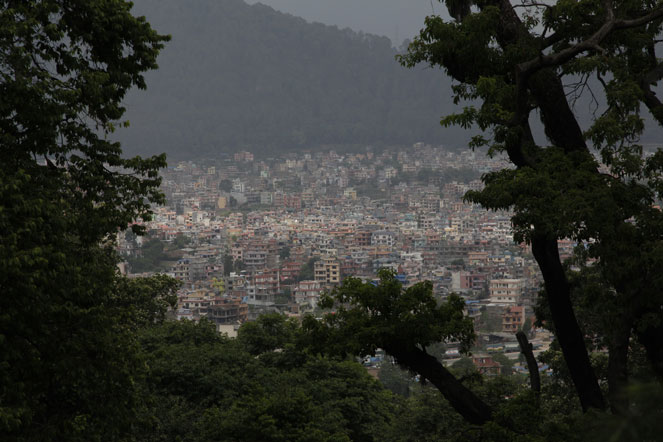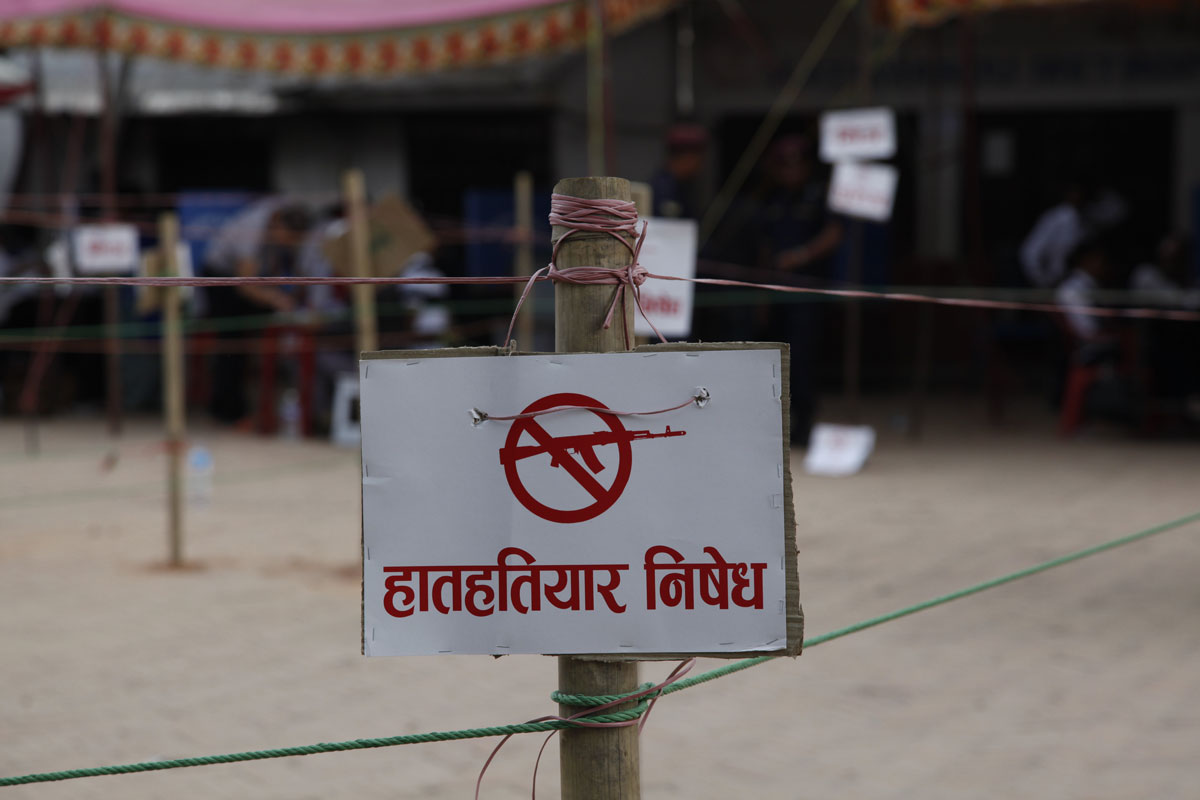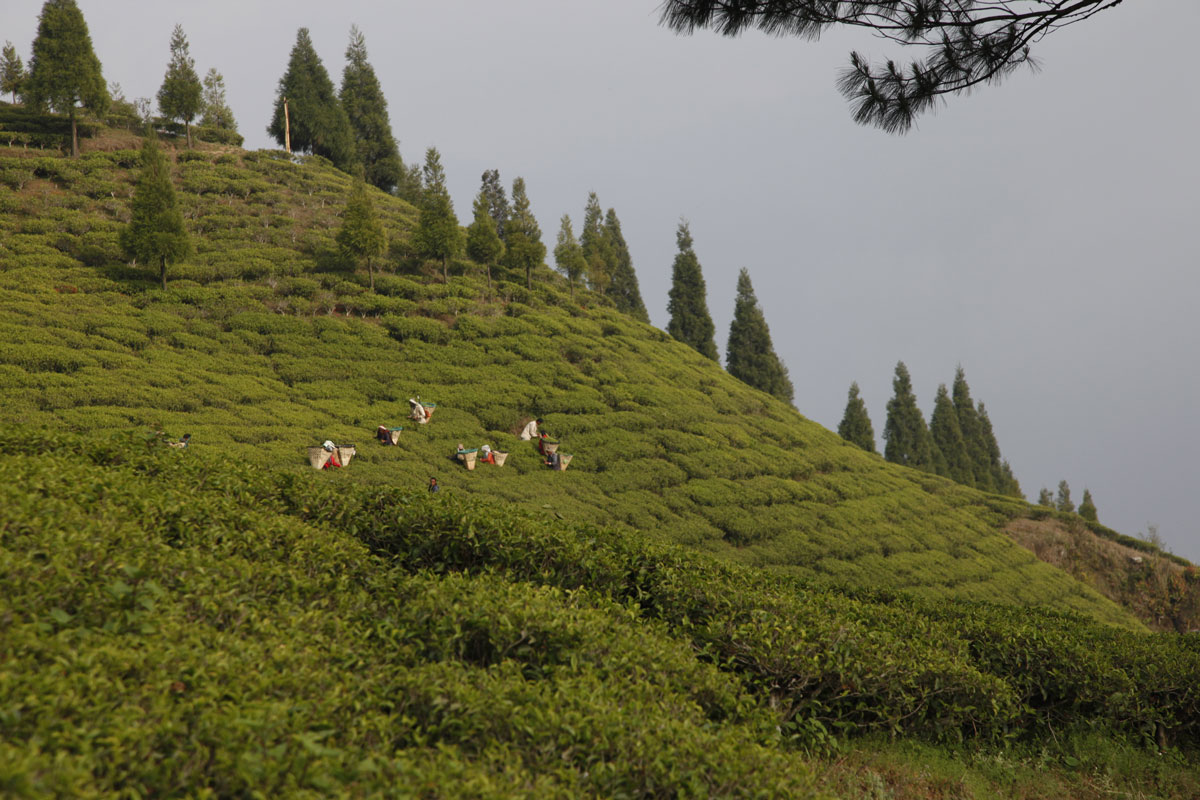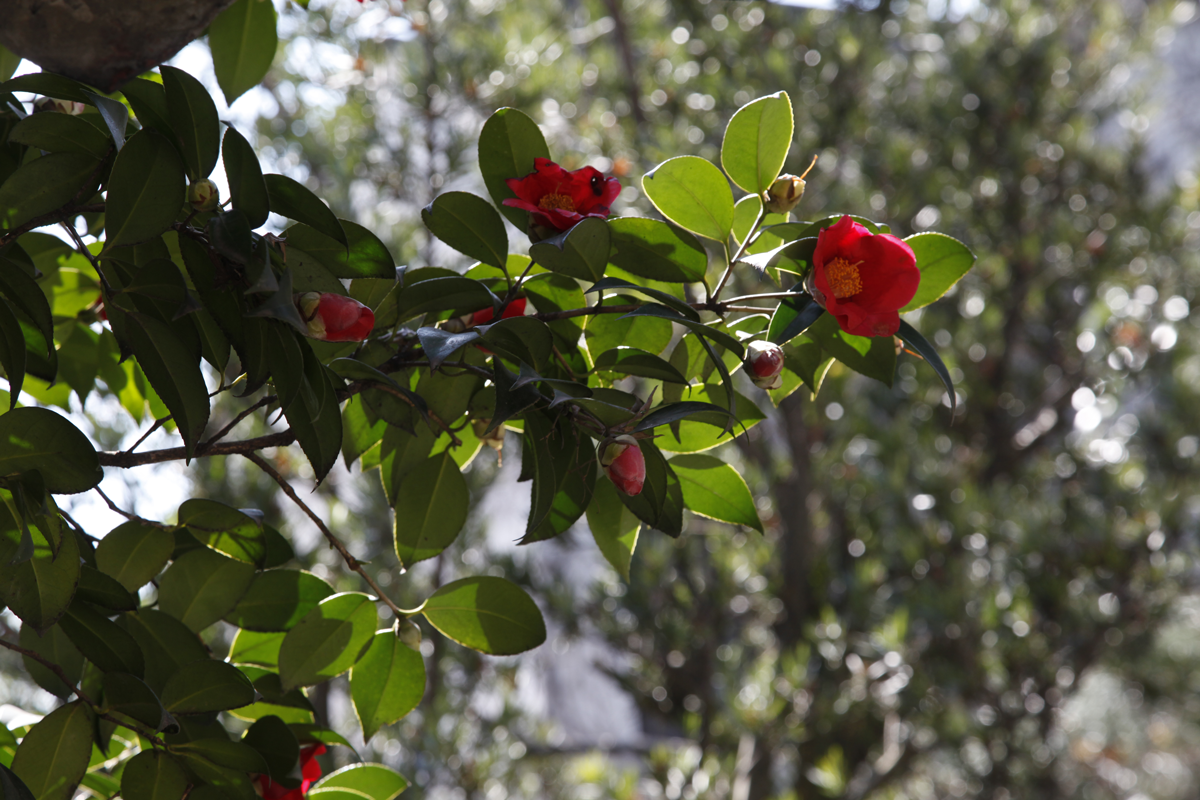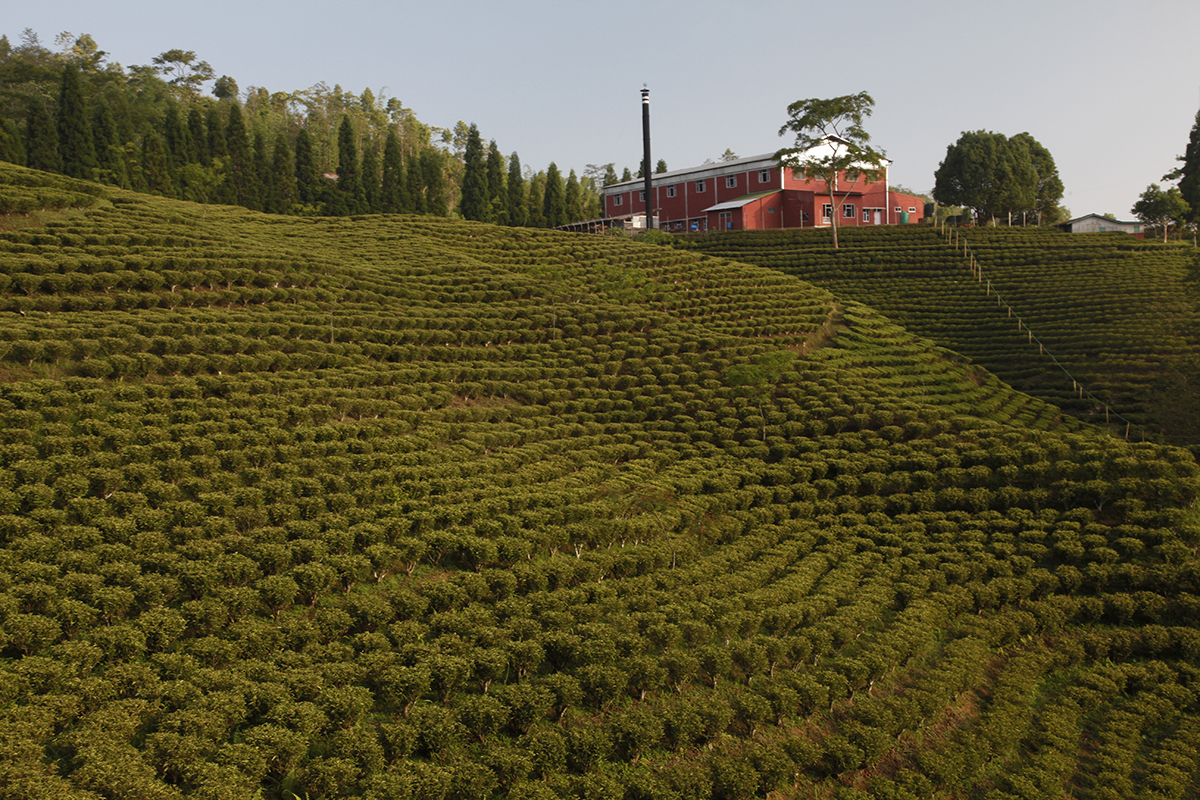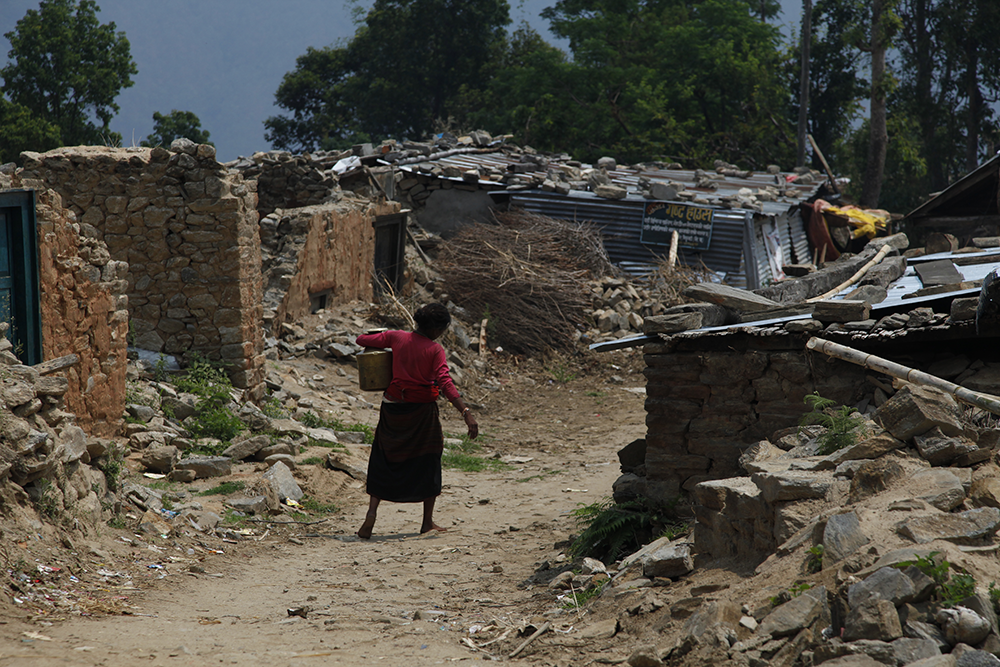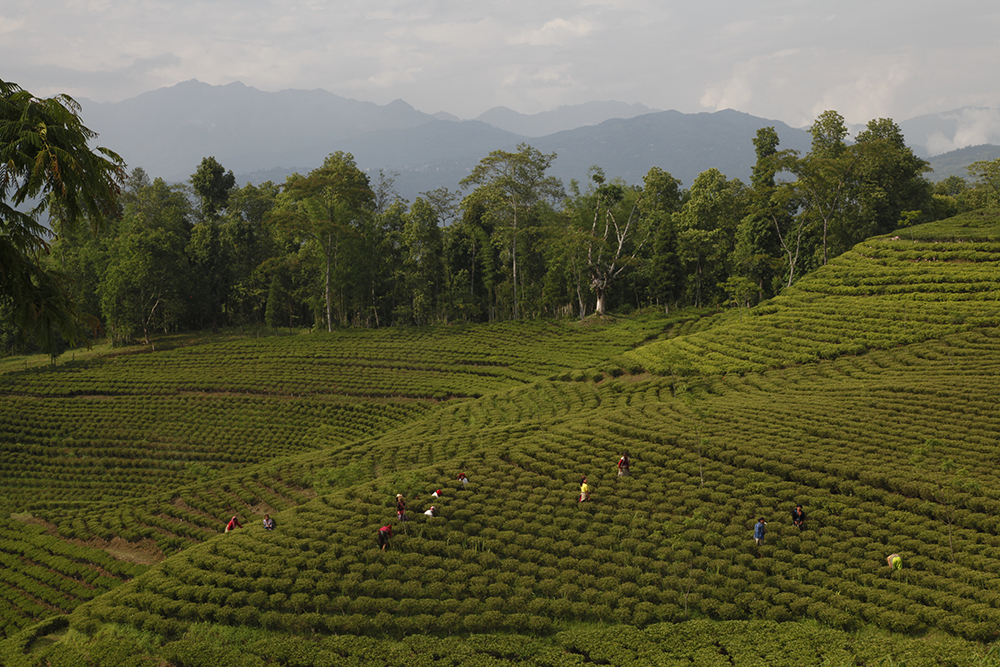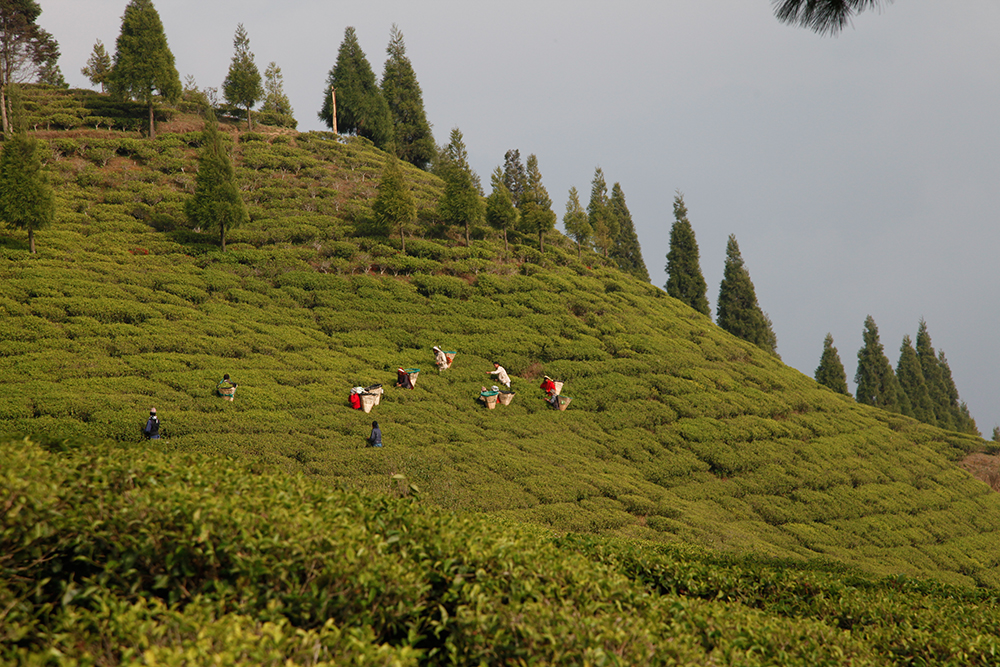I met Rana Bahadurdiyali a few days ago in Ilam valley, in Nepal. Twenty-four years ago, Rana founded the co-operative Teenjure, which today has no less than 234 farmers who combine their tea production. This year, Teenjure has started to produce some very good, interesting and varied teas. When I asked Rana what he wanted me to write about him, he told me how hard everyone had worked, how challenging it was for the whole community of Teenjure to start growing tea – clearing the land, planting the tea plants, building the factory and installing the equipment. Twenty-four years ago, when they began this project, they had no water, no road, no electricity. It took them two years to build the factory, Rana, aged 82, tells me, smiling.
Nepal
There’s a nirvana for everyone
I’m writing from the Nirvana Garden Hotel in Kathmandu. In Buddhist culture, “nirvana” means a state of bliss. I find it in the country’s mountains when I drink sublime teas in a protected landscape, often made up of jungle and neat rows of tea plants. The harmony between the experience of tasting and the contemplation of nature fills me with happiness. Tomorrow, I’m leaving for the Ilam valley in the east of the country, to visit farmers I already know, and meet some new ones.
In Nepal, special measures are put in place on election days
This Sunday, people were voting in Kathmandu. Here, on election days, to ensure the process is peaceful and democratic, all car traffic is banned and the sale of alcohol is suspended. Also, around the polling stations, there are signs reminding you that it is strictly forbidden to carry a gun in the vicinity.
A great name does not always make great tea
In Darjeeling and Nepal, you cannot trust the name of a garden blindly. Of course, plantations such as Turzum, Singbulli, Puttabong, Thurbo, Margaret’s Hope and Castleton have a much higher reputation than others. The same goes for Guranse and Shangri La in Nepal. But it is essential to understand that even the most prestigious gardens cannot produce high-quality teas all the time. At some point in the year they end up selling pretty nondescript ones. During the rainy season, for example, even an experienced planter cannot produce good tea, because the leaves grow too quickly and have no time to develop their essential oils. Also, each plantation has plots that are more or less well oriented, and planted with different cultivars. On Monday you might produce a sublime tea using leaves harvested from an excellent plot, and on Tuesday produce a very ordinary tea from a different part of the plantation. To sum up: yes, some gardens can make remarkable teas, but watch out, as they also produce mediocre ones. So you have to be very selective, and taste a vast amount of tea, to be able to recognise the best.
There’s a spring tea for everyone
For those who want to try spring – or first-flush – teas, here are some tips. Darjeelings harvested in March and April develop sustained floral notes accompanied by a touch of astringency and bitterness. For a combination of brioche and floral aromas, try Nepalese first-flush teas, which are harvested from the start of April. Those who enjoy chestnut, mineral and vegetal notes would do well with new-season Chinese teas. (The rarest and most sought after, and therefore the most expensive, are those known as pre-Qingming teas, harvested before Chinese Tomb-Sweeping Day which takes place at the beginning of April). Lastly, for fans of iodine, cut grass and steamed vegetable notes, Japanese Ichibanchas are a pure delight. They are harvested between the end of April and the middle of May. Of course I haven’t covered them all here, and there are other countries to discover, but if we are talking about springtime and nature reawakening, and you want teas that evoke gardens and rising sap, these are the ones I think of first.
Kuwapani: a rather unordinary past
Some tea plantations have rather ordinary origins, and the Kuwapani plantation is one of them. A few years ago there was a rundown angora rabbit farm in Kuwapani that was only just limping along. I’m talking about the farm but I’m sure the same could have been said for the poor rabbits, bred for their fur alone. The owner saw a tea plantation being established on the hill opposite, followed by another. He observed the harvesting and processing of the leaves. He developed a taste for what his neighbours, Jun Chiyabari and Guranse, produced, and he witnessed their growing success. Then, one day, he decided to change his business, radically. He opened up the hutches, installed machines in his main building to process the tea leaves (rollers, dryers and so on), planted his land with tea, recruited an experienced, talented man to oversee the work, and a few years later the Kuwapani plantation had made its name in the world of tea. I heard this story while I was staying at Kuwapani and asked the owner about an object that had been intriguing me. On the mantelpiece in the living room sits a magnificent porcelain rabbit.
Spare a thought for Nepal
It’s more than a year since Nepal was hit by a powerful earthquake. And since then, for many villagers, life has not improved. In this country that is very rural and particularly mountainous, the aid they were promised has not been forthcoming. Many people are living in their houses as before: they have placed a makeshift roof over the ruins, and life goes on. But what will happen to them after the monsoon, what will they have left after the rainy season that turns everything into mud?
Spring follows spring
After Darjeeling, we turn our attention to Nepal, China and Japan, to enjoy their new spring teas. In Japan, we return to the farmers we know, and we also enjoy discovering teas from others. In China, we are guided by the traditional appellations, which are attached to a particular village. In Nepal, we know which plantations are capable of producing the best teas at particular times of year. There is sometimes an added difficulty though, like here at Kuwapani. The planter, who was an employee rather than the owner of the plantation, has left. What will the results be like under his successor? We’ll know the answer in a few months’ time. Meanwhile, let’s enjoy tasting the new teas this spring has to offer!
Darjeeling teas and Nepalese teas: two schools
Due to a way of thinking I don’t share, Darjeeling tea producers fear competition from their Nepalese neighbours. They think the latter are copying them and can sell their teas more cheaply, because of their lower production costs.
Yes, Nepalese teas sometimes offer good value for money, but they are not copies of Darjeelings. There are some passionate planters in Nepal who know that their country still needs to prove itself to gain recognition in the world of tea, and as a result, they try to be innovative. In Darjeeling, planters are in a more comfortable position due to their reputation that is often – but not always – merited.
So, they are two different worlds: innovation on one side, tradition on the other. By looking carefully and being highly selective, you can find excellent teas on both sides of the border. And it would be a shame to deprive yourself of either kind.


